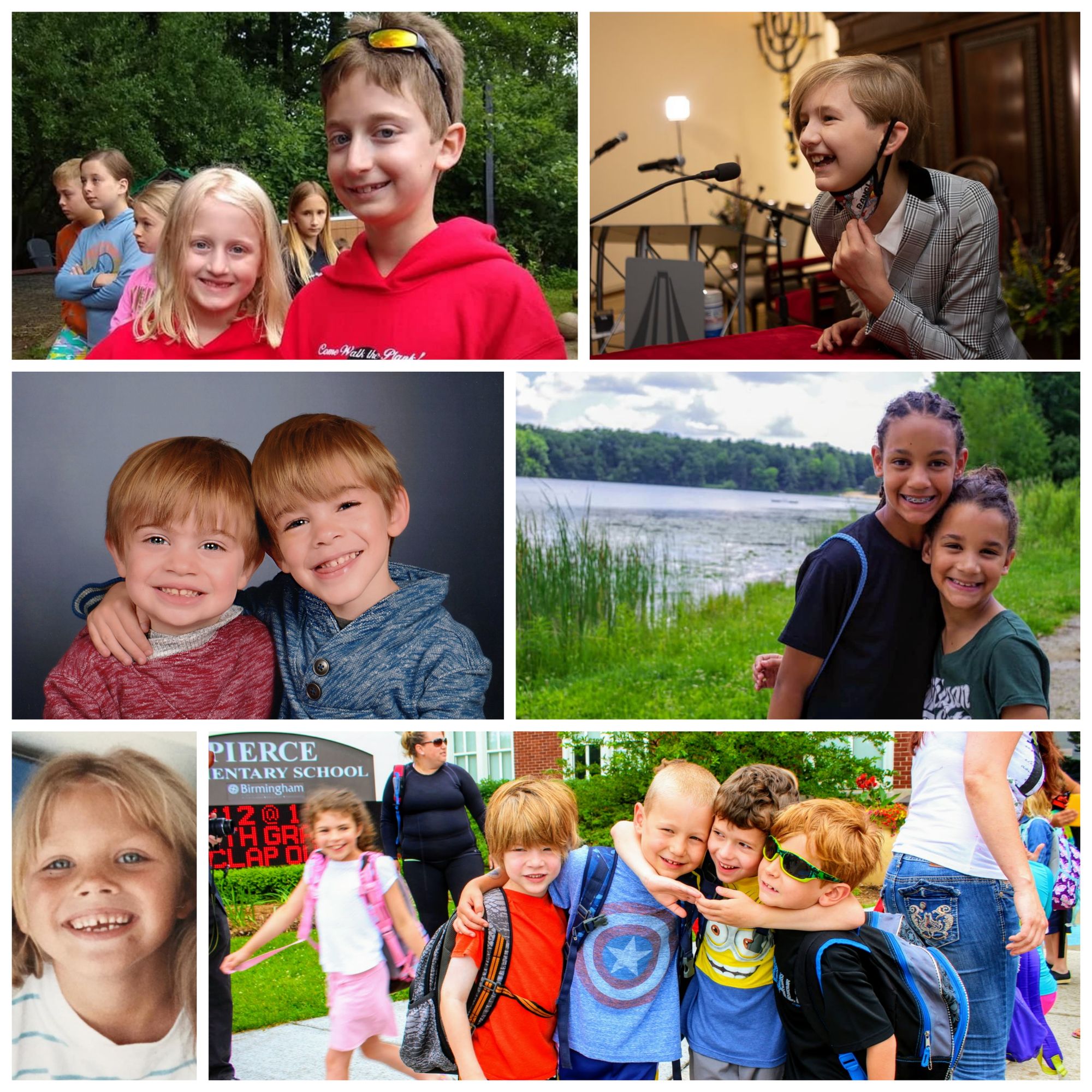White skin. Dark, curly hair. Brown eyes. Noses that have provided fodder for plastic surgeons, comedians and bigots alike.
Looking Jewish — is there a stickier stereotype?
Sticky in the messiness of addressing something that fairly applies to many Jews, whose outward physical characteristics (or kippah or sheitel) disproportionately bear the brunt of antisemitism.
And sticky in the persistence of a type that excludes much of the increasingly diverse American Jewry.
Our community is filled with lovely Jewesses with curly dark hair — an act of Jewish resistance — and with guys sporting Jewfros.
But this is not the only way to look Jewish. Sit outside any Sunday school or Early Childhood Center at drop off and you will see blondes and redheads. The fair complexion traditional to Ashkenazi Jews accompanied by peers with black and brown skin.
Before I was interested in this as a sociologist, I approached it as a parent in an interfaith family. I’ve long since made peace with my own hair (frizzy, never quite curls), eyes (blue), height (taller than you’d realize if you’ve only met me via Zoom) and nose (“Don’t worry, you’ll grow into it,” my grandma told me out of the blue when I was little). My children look more stereotypically Aryan than Jewish. And not “looking Jewish” impacts the interfaith, interracial, converts and many born Jews whose looks fail to conform to this antiquated notion.
The Pew study does not address hair or eye color or how much product is required to control one’s hair, but it does cover the issue of race and ancestry. Depending on the definition, somewhere between 8-17% of American Jews break from the white Ashkenazi “norm.” Looking at the youngest group surveyed (18-29 years old), the number rises to 15-28%.
Nerd break: The reason for the large gap is that the smaller number only includes Jews that identify racially as Black, Hispanic, Asian, multiracial or otherwise non-white. The larger number adds in Jews that identify as Sephardic or Mizrahi or Jews who were born or had parents born in the Americas outside of the United States and Canada, Asia outside the Former Soviet Union, Africa, or the Middle East. These definitions are likely both overinclusive and underinclusive at the same time, but such is the joy of demographic studies.
Expanding out to households, 13% of Jews live in multiracial households and 17% of Jews live in households where at least one person is not white.
The growing diversity of the Jewish community is a glorious aspect of the American Jewish experience, and not just because it gave us Puppy for Hanukkah. But with this growing diversity, our community – especially people that have implicitly or explicitly held narrow conceptions of Judaism – has some work to do.
When you already feel like an outsider from the community because of your marriage or race or conversion status, hearing “You don’t look Jewish” can feel like a punch in the gut. Worse, Jews of Color can be the focus of profiling or questioning. While I am limited by my own identity as a white Jew in commenting on this subject, there are links at the bottom highlighting some powerful stories by Jews of Color.
Meeting with a Rabbi in the years before my engagement, I explained how I felt like my husband would stick out like a 6’4” blonde thumb at synagogue. The Rabbi kindly allayed my concerns by pointing at the picture on the wall of his own blonder half (who had converted to Judaism) and the children he was happy to have primarily resemble her. But after decades in the rabbinate, he was the consummate insider. I still feared that my in-group status was in jeopardy.
There is an understandable — not insurmountable — generational dynamic at play here. Among American Jews 65 and older, only 3% are not wholly white. The experience of their youth is not the experience of today, but for some the picture of the Jewish community has not changed along with the times.
During services a couple years ago, Rabbi Megan Brudney showed a piece of art work to the congregation. I don’t remember what it was (or what the sermon was about), but I remember the first response from the pews:
“The person in the picture does not look Jewish.”
I noticed the Rabbi take a deep breath. I could imagine what was running through her head. As someone deeply committed to a culture of inclusiveness and welcoming in our congregation, she could not let the comment go by. Nor was she inclined to call out one congregant in front of everyone.
She responded kindly and firmly. “You would be surprised. There is actually no one way to look Jewish. There are Jews from all kinds of backgrounds and places that look all kinds of ways."
And with this simple affirmation, we all belonged. All of our eyes. All of our hair. All of our skin. The only way to look Jewish is to look at others, from your soul to theirs, with all the empathy, humility and generosity that our tradition teaches.
Articles to read:
- "The Black Jews are Tired" by Chris Harrison
- "On Passing and Not Trying to Pass" by Tema Smith
- "Not All Jews Look Like Barbra Streisand" by Erika K. Davis
Books to read:
- The Color of Love by Marra B. Gad
- Anything on this list
Podcasts to listen to:
- Wholly Jewish

Comments
Sign in or become a Nu?Detroit member to join the conversation.
Just enter your email below to get a log in link.